Discover how tarot and emotions connect to provide insights into feelings. Can tarot read your emotions accurately?
Can tarot read feelings?
Demystifying Tarot Cards
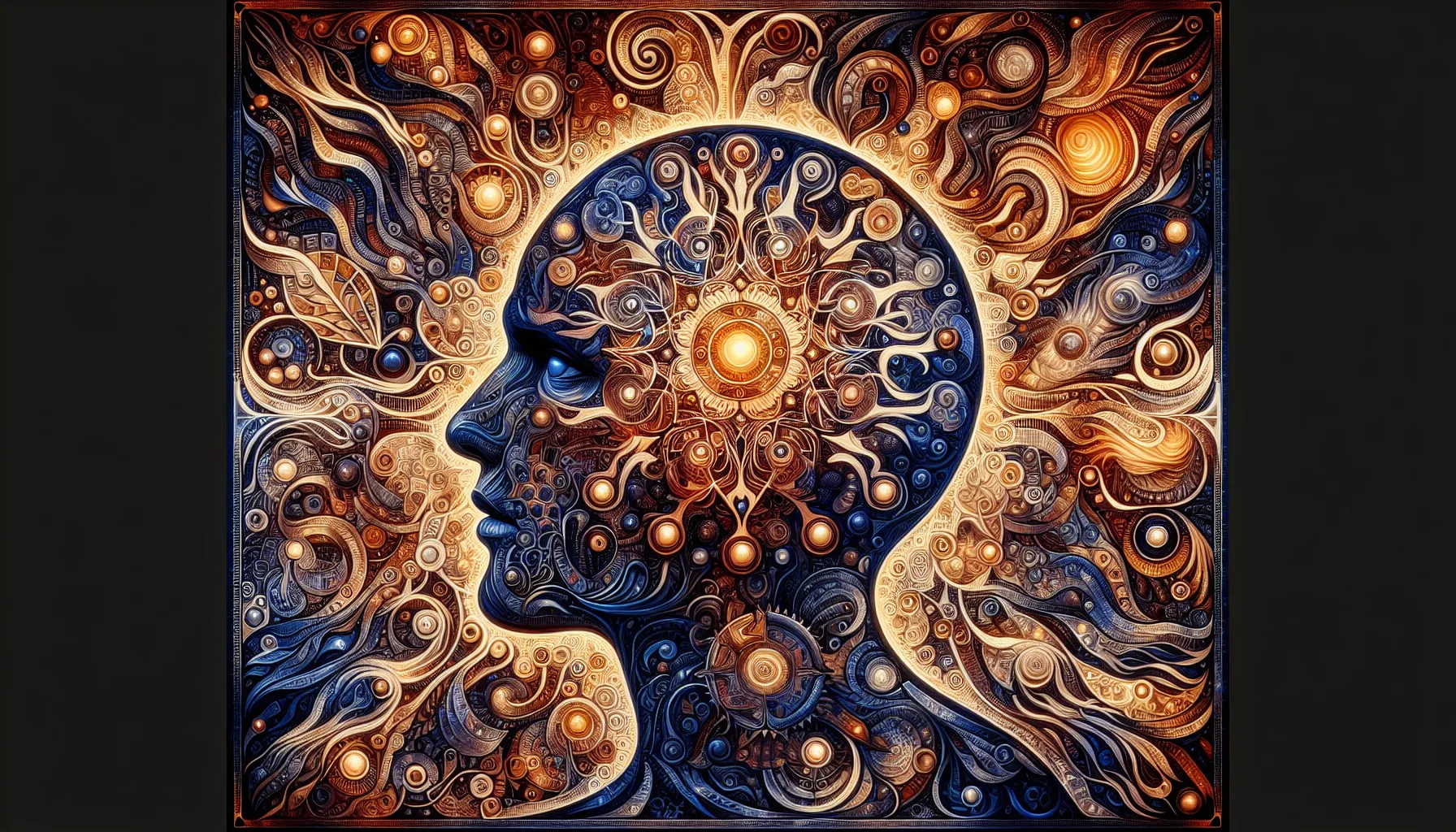
Exploring the Connection Between Tarot and Emotions
Tarot cards ain’t just mystical trinkets; they’re keys to the heart, unlocking the deep stuff you’ve tucked away. When you whip out those cards, there’s a good chance they’ll vibe with wherever your head’s at, reflecting your vibes and maybe even making things a bit clearer.
These cards work on your gut feeling, nudging around in your subconscious. Whether you’re reading the cards or someone else is, they’ll spill the tea on your emotional cocktail — joy, sadness, curiosity, or plain ol’ confusion. The illustrations and symbols are crafted to tug at those heartstrings, giving you a clearer view of what you’re truly feeling.
Getting how tarot ties to emotions can totally up your game with the cards. Curious about how to read the cards solo? Check out our guide on reading tarot yourself.
In a tarot deck, every card throws down its own emotional vibe. Here’s a peek at what you might find:
| Card | Feels It Brings |
|---|---|
| The Lovers | All the Love, Peace |
| The Tower | Chaos, Tumult |
| The Sun | Brightness, Good Vibes |
| Five of Cups | Heartache, “Oops” Moments |
When these cards hit the table, they might just spill the beans on those hidden emotions you haven’t fully clued into yet. The read’s all yours; so trust your gut. Want more on how tarot gives you that emotional mirror? Dive into our chat on tarot truth.
Hunting for answers about your love life, career, or how you handle life? Tarot cards can light up your emotional roadmap. By tuning into your heart, tarot can help you make smarter choices and keep your emotional health in check. Curious how often to hit up the cards? Our piece on tarot reading frequency lays it all out.
The Basics of Tarot Reading
Wanna dive into the world of tarot cards and emotions? Well, understanding the tarot basics is like scoring the golden ticket. Let’s kick off with a rundown on that mysterious deck of cards and get a glimpse into how tarot readings flow.
Understanding the Tarot Deck
So, a tarot deck? It’s made up of 78 cards, each one buzzing with its own tales and vibes. It’s split into two biggies: the Major Arcana and the Minor Arcana.
- Major Arcana: This cool bunch has 22 cards. Think of them as your life lessons and spiritual stuff. Big moments? These babies know all about ’em.
- Minor Arcana: Here you’ve got 56 cards, split into four suits. You got your Cups, Pentacles, Swords, and Wands. Each gang’s got 14 cards, including hero cards like the King, Queen, Knight, and Page.
| Tarot Deck Sections | Number of Cards |
|---|---|
| Major Arcana | 22 |
| Minor Arcana | 56 |
| Total | 78 |
The symbols on these cards? They’re like peeking behind the curtain on your feelings and stories. Wanna check out more on how these symbols can knack your emotions? Don’t miss our Emotions and Symbolism in Tarot Cards piece.
How Tarot Readings Work
Curious about how tarot reveals life’s secrets? Here’s the no-frills scoop:
- Preparation: First, you’re setting the stage. Got a burning question or just feeling curious? Get your intention crystal clear.
- Shuffling the Cards: The reader—you, or some tarot pro—gives the deck a shuffle with the intention front and center.
- Spreading the Cards: Time to lay the cards down in a spread. Spread styles run from the quick three-card draw to the epic Celtic Cross, each offering its own spin on your question.
- Interpreting the Cards: Now, crack the code on how each card’s spot and meaning spill the beans. It’s like piecing together a story from symbols.
Getting the hang of reading these cards is a neat trick for getting cozy with your emotions in a tarot session. Need more juice? Check out our guide on reading tarot yourself.
When you get comfy with the deck and tune into how tarot readings roll, you’re on the road to blending tarot with emotions. Ready to upgrade to pro-level? Jump into our guides on Connecting with Emotions in Tarot Readings and Techniques for Reading Emotions in Tarot.
The Role of Intuition in Tarot Reading
Connecting with Feelings in Tarot Readings
Intuition’s like your GPS when you’ve lost the map—especially in tarot readings where feelings take the driver’s seat. When you’re in a tarot reading, you’re sort of inviting your inner voice to lead you through the card’s stories. This connection lets you get a handle on your feelings and see how they’re steering your life right now.
To really tune into what you’re feeling during a tarot session, you need to chill out and be open-minded. Find your Zen spot—a place where you can just be, without your phone pinging or cats jumping on your lap. Before you pull any cards, take a few slow, deep breaths to calm your nerves. While shuffling, think about the feelings you want to explore and their sway on your life. Your gut will guide you to the cards that vibe with you.
Here’s a quick three-step cheat sheet to help you get emotional clarity during a tarot reading:
- Chill and Ponder:
- Spend a few minutes zoning out. Breathe in, breathe out, and let the noisy thoughts fade.
- Think about what you’re feeling right now. What’s bugging you? What needs your attention?
- Set Your Goals:
- Iron out what you want to uncover about your emotions.
- Say it loud (or in your head) while you shuffle those cards.
- Feel Your Reactions:
- Watch how you react to the cards you pick.
- Trust your feelings. How do they make you feel? What vibes do they give off?
Reading Feelings through Tarot
Now that you’re in touch with your emotions, it’s time to decode them with tarot cards. This involves checking out the card’s symbols alongside your gut feelings. Each tarot card is like its own little storybook, packed with imagery and meanings that can spotlight different emotions.
Take the Cups suit, for example. It’s usually all about feelings, relationships, and matters of the heart. Cards like the Ace of Cups or the Three of Cups often bring hopeful new emotional starts or good vibes with friends. On the flip side, the Five of Cups might spill the beans on regret or sadness.
Interpreting emotions with tarot means mashing up these classic meanings with your personal feels. Here’s how to get the hang of it:
- Decode Card Meanings:
- Get familiar with the classic meanings of tarot cards.
- Zero in on the Cups suit for emotional clues.
- Go with Your Gut:
- Trust those initial feelings when you see a card.
- Note down any big feelings or thoughts each card stirs up.
- Pick Spreads for Clarity:
- Use tarot spreads aimed at dissecting emotions.
- Go for the common ones like the Three-Card Spread (Past, Present, Future) or the Relationship Spread.
If you’re itching to dive deeper into tarot reading tricks, check out our article on tarot reading. If you’d rather go the DIY route, our DIY guide on reading tarot yourself can help out.
By mixing your intuitive sparks with the deep stories of tarot, you can really understand your feelings and see how they’re mapping out your life’s path. Remember, the magic key to tarot reading lies in trusting yourself and what the cards have to whisper to you.
Can Tarot Cards Read Feelings Accurately?
Tarot Cards as Reflectors of Emotions
For ages, tarot cards have been like those nosy neighbors — always eager to peek into your life’s happenings, especially your feelings. Think of them as your emotional sidekicks. When you pull a card during a tarot reading, the art and symbols dance with your hidden thoughts, coaxing your emotions to the surface like a caffeine boost on a Monday morning.
Take The Moon — it might surround you in mystery and chaos. Or The Tower, which can feel like your favorite Netflix series just got canceled. Meanwhile, The Sun or The Star might have you skipping down the street like you just found a dollar bill. Getting the hang of these tarot vibes can bring a little light bulb moment about what’s really goin’ on inside.
Limitations of Emotion Reading in Tarot
While tarot can feel like that friend who silently nods and seems to understand, remember, it’s not always spot-on with the emotional detective work. The readings are kinda like your playlist mixes — different vibes depending on who’s choosing the songs. How one reader interprets a card might totally differ from another reader’s view because it’s all about personal style and experience.
Your mood might also steer the reading. If you’re in a funk, it might color the cards in ways you didn’t see coming, like judging a book by its cover. Keep an open heart, some curiosity, and maybe a pinch of doubt. If you want to untangle how your feelings or the reader’s mojo affects things, look up tarot accuracy.
| What’s Influencing the Vibe? | How Much? |
|---|---|
| Reader’s Gut Feeling | A Lot |
| Your Current Mood | A Lot |
| Tarot Deck’s Images | Kinda |
| Question You’re Asking | Kinda |
Knowing both the awesome and meh parts of tarot helps you get a more exciting and honest peek into what’s happening with your heart. Mix your instincts with tarot’s storytelling power, and you might just sketch out a new path to tackle life’s head-scratchers.
For more tales on how tarot readings can shift due to interpretation, swing by our chat on tarot truth and tarot accuracy.
Emotions and Symbolism in Tarot Cards
Ever wonder how tarot cards speak to your soul? Understanding the emotions in these mystical cards can make your readings more personal. Each one is like a little emotional guidebook, filled with symbols and stories waiting to unfold.
Common Emotions Portrayed in Tarot Cards
Spotting the emotions tied to different tarot cards can give your readings a more relatable touch. Here’s a glimpse into what some well-known cards often convey:
| Tarot Card | Common Emotion |
|---|---|
| The Lovers | Love, Harmony |
| The Tower | Chaos, Anger |
| The Moon | Fear, Anxiety |
| The Sun | Joy, Positivity |
| Three of Swords | Heartbreak, Sadness |
| Nine of Cups | Fulfillment, Satisfaction |
Each card acts like a mood ring, revealing different feelings depending on the situation. Dive into more details with our article on tarot reading for extra nuggets of wisdom.
Symbolism and Its Connection to Emotions
Peek past the pretty pictures; tarot is a maze of symbols that awaken your emotions. These symbols, packed in each card, are your treasure maps that guide you through the feels.
Take these, for instance:
- The Tower: Pull this card, and you’re in for a wild ride! It’s all about chaos and upheaval, shaking up old habits like an unexpected plot twist.
- The Star: A beautiful pause for hope and calm. This card whispers serenity and invites you to feel a little peace.
Crack the code of these symbols, and they’ll help you grasp the emotions layered in your reading:
- The Moon: Watch out for those sneaky symbols of the moon and night—they tread into fears lurking in the back of your mind.
- The Sun: Bright as day, this one’s your ticket to happiness, clarity, and even a little carefree dancing under a clear sky.
Focusing on these emotional breadcrumbs can lead you to a richer understanding of your readings. Making sense of the tangled emotions becomes a tad bit easier. For more on this symbolic journey, have another look at reading tarot yourself.
Unlocking the secrets in each tarot card turns your session into much more than a mere fortune-telling; it’s a heartfelt exploration. Let these cards be mirrors to your inner emotional landscape, offering insights and a chance for growth.
Interpreting Feelings in Tarot Readings
Peeking into tarot readings is like peering into someone’s heart—it’s a chance to understand and interpret emotions and takes you on a wild ride through human feelings. Here’s how you can be a tarot emotion detective and read between the cards without breaking a sweat.
Tricks to Spot Emotions in Tarot
Being a tarot emotion whisperer isn’t just about knowing what the cards mean, it’s about feeling the vibe and deciphering their secret gossip:
- Picture Mojo: Each card is like a little painting telling its own emotional story. Look at the colors, expressions, and actions. Imagine you’re in an art gallery—what stories do the pictures tell you?
- Gut Feelings: Ever noticed how your stomach flips when something feels just right (or wrong)? Listen to that while doing your readings. Let your instincts play assistant detective.
- Card Parking Spots: Where a card pops up in a spread matters! If one parks in the “past” slot, it might be talking about bygone feelings, while a “future” position hints at what’s brewing ahead.
- Crafty Questions: Ask questions that pull out emotional clues. Try, “What feelings are shaping my life right now?” to get that emotional radar pinging.
- Card Chats: Pretend the cards can talk to each other. Are two cards having a friendly chit-chat or a heated debate? Those interactions could reveal deeper emotional tales.
Cracking These Emotional Tarot Codes
Tarot cards sometimes tell tales more twisted than a mystery novel. Here’s how to piece together these curly emotions like a pro:
- Emotion Bouquet: Cards can hint at a bunch of meanings. Take the Death card—it might sound ominous, but it could talk about positive changes too.
- Story Time: Consider what the reader (be it your client or you) is dealing with. How do the cards’ emotions fit into real-life dramas?
- Tiny Details Matter: Sometimes it’s the small stuff that’s loudest. A peaceful scene on a card might mean tranquility, no matter how rocky things seem otherwise.
- Emotional Echoes: Spotting the same mood pop up in different readings? That’s your emotional echo. It reveals persistent vibes you might want to dive deeper into.
- Backup Clarity: When things go fuzzy, pull out more cards to clear the emotional fog. They’ll help paint a clearer picture of what’s happening underneath.
| Card | Possible Feelings |
|---|---|
| The Tower | Surprise, Anxiety, Moment of Truth |
| The Empress | Warmth, Affection, Plenty |
| The Moon | Puzzlement, Secrets, Gut Feeling |
| The Sun | Cheerfulness, Clear Vision, Hope |
| Five of Cups | Sadness, Remorse, Letdown |
Diving into the emotional ocean of tarot needs some patience and a sprinkle of curiosity. The more you practice, the better you get at tuning into the heartbeats of these cards and unearthing the stories they guard. Got more questions about the role your intuition plays in these readings? Check out our insights on tarot timing magic.
Personal Reflection and Emotional Interpretation
How Your Feelings Can Shape Tarot Readings
When you grab those tarot cards, remember that your mood plays a big role in what you see in the cards. Emotions have a way of painting everything in their color, influencing not just the interpretations but also the vibe you carry with you into the session.
- Feeling the Vibes: If you’re jittery, you’re likely to look at the cards through a darker lens. On the flip side, if you’re doing cartwheels of joy, the cards might seem a bit more like cheerleaders in your corner.
- Your Mindset and Goals: How you’re feeling can twist your intentions, messing with your focus and the answers you’re chasing. Got some unresolved junk in the trunk? It’s probably gonna steer the questions you toss out there and the kind of answers that tick your boxes.
Using Tarot for Emotional Insight
Tarot cards? They’re like a secret decoder ring for your feelings. They help you dive into the ocean of emotions and fish out stuff even you didn’t know was swimming around in there.
- Name That Feeling: The cards are like emotional flashcards, helping you pinpoint and label those elusive emotions. The Five of Cups might whisper sadness, whereas the Ace of Cups might shout about fresh starts and love things.
- Spotting the Usual Suspects: Keep an eye on those patterns popping up in your readings. You might just catch on to some recurring emotional storylines. A constant cameo of the Nine of Swords could be waving a red flag about anxiety or sleepless nights.
| Card | Feelings It Might Evoke |
|---|---|
| Five of Cups | Sadness, loss |
| Ace of Cups | Fresh starts, love |
| Nine of Swords | Anxiety, restless nights |
- Healing and Growing: Tarot isn’t just for kicks; it’s a guide on the road to emotional healing and personal growth. The Star is your buddy for hope and renewal, while the Death card beckons you to embrace transformative change.
If you’re keen on diving deeper into the tango between tarot and emotions, swing by our guide on tarot reading.
By peering into your feelings with tarot, you can map out your inner world both systematically and intuitively. This little journey doesn’t just boost your brainpower about yourself—it gives you the strength to face your emotional roller coaster with a clearer and cooler head on your shoulders. For more on starting and sticking to your tarot groove, skip on over to our spot on reading tarot yourself.
Exploring the Emotional Journey Through Tarot
Tarot cards, for some folks, hold a little sprinkle of magic when it comes to unraveling emotions. These colorful cards let you peek into the hidden corners of your heart, helping you get comfy with the feels and grow emotionally.
Empowering Yourself Through Emotional Tarot Readings
Using tarot to boost your emotional power is like having a heart-to-heart with paper cards. When you pull a card, let it chat to you about your deepest emotions. Think about how its picture and symbols hit home with your own life.
While you’re busy with a tarot session, keep an eye on:
- Card Images: What feelings pop up first when you see the card?
- Symbols: How do these little pictures on the cards connect to your life story?
- Gut Feelings: What does your instinct say about what the card means?
When you’re really vibing with what the cards reveal, you can tap into a deeper understanding of what you’re going through emotionally. This makes handling your feelings way less tricky. If you’re curious about reading tarot on your own, check out our article on reading tarot yourself.
Nurturing Emotional Growth with Tarot
Tarot isn’t just about looking into the now; it’s like a diary for your emotions. Pulling cards regularly helps you keep tabs on how you’ve been feeling and growing. Use them to put together your very own emotional journal.
Here’s a little starter guide to get your emotional grow-zone on:
- Card-A-Day: Make drawing a card every morning a routine and jot down how it makes you feel.
- Monthly Mood: Check out what’s happening with different cards over the month and match them with your feelings.
- Look Back: Think about how old readings match up with how you’ve been feeling emotionally.
Keeping tarot in your everyday mix makes room for reflecting on yourself and gives a boost to handling upcoming emotional hurdles. Dive into more about how your feelings can shape readings in our piece on tarot and emotions.
Here’s a simple way to track your tarot travels:
| Date | Card Pulled | Feeling it Brought | Personal Thoughts |
|---|---|---|---|
| 01/01 | The Empress | Loving, Plenty | Felt good vibes about what’s coming up |
| 01/02 | The Tower | Surprise, Change | Wow, unexpected shifts at the workplace |
| 01/03 | The Star | Bright, Fresh | Hopeful about what’s around the corner |
For the tarot newbies, knowing the basics makes a difference. Peek into our beginner guide on tarot reading to kick off your tarot adventure. Stick with it, and you’ll find tarot your trusty sidekick in growing emotionally and personally.

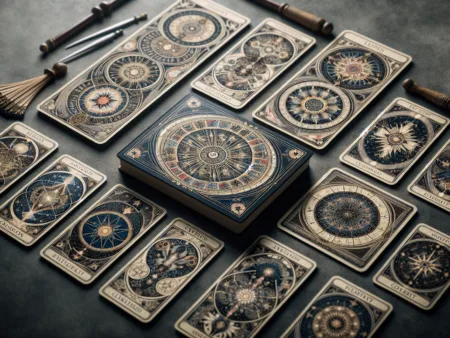
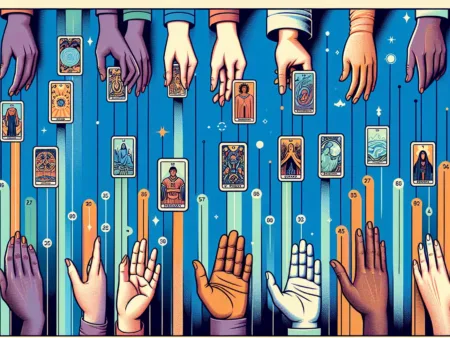
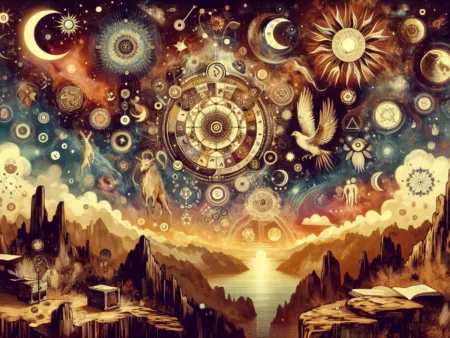



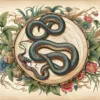


[…] Knowing when NOT to mess with those tarot cards is as vital as knowing when to. It helps you walk into a session with a zen mindset and the perfect setup, and you can learn more about those vibes in tarot and emotions. […]